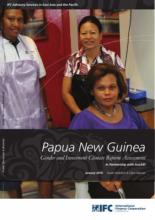Land Library Search
Through our robust search engine, you can search for any item of the over 73,000 highly curated resources in the Land Library.
If you would like to find an overview of what is possible, feel free to peruse the Search Guide.
/ library resources
Showing items 1 through 9 of 61.This paper explores land policy for socioeconomic development in Vietnam. The research is based on field work, discussions with officials and scholars and background research, and highlights topics critical to the formulation and implementation of land policy.
This paper compares the Hoa Binh (constructed 1979-1994) and Son La dams (under construction since 2005) to investigate how Vietnam’s resettlement policies and programmes have evolved over time.
This paper investigates the impact of international migration on technical efficiency, resource allocation and income from agricultural production of family farming in Albania.
Livestock systems globally are changing rapidly in response to a variety of drivers. Human population growth, rapid urbanization, and growing incomes will lead to substantial increases in the demand for livestock products in the coming decades.
Cambodia emerged in the early 1990s from 30 years of conflict, the brutal Khmer Rouge era, and a decade of Vietnamese occupation, with one of the world’s lowest per-capita incomes, and with social indicators far behind those of neighboring Southeast Asian countries.
One of the most compelling reasons for pursuing low-carbon development is that the potential impacts of climate change are predicted to be severe, for both industrial and developing countries, and that reducing greenhouse gas emissions can reduce the risk of the most catastrophic impacts.
This report is one of six gender and investment climate reform assessments undertaken in six Pacific nations including Vanuatu. The report analyses gender-based investment climate barriers which constrain private sector development and identifies solutions to address them.
This report is one of six gender and investment climate reform assessments undertaken in six Pacific nations including Papua New Guinea. The report analyses gender-based investment climate barriers which constrain private sector development and identifies solutions to address them.







